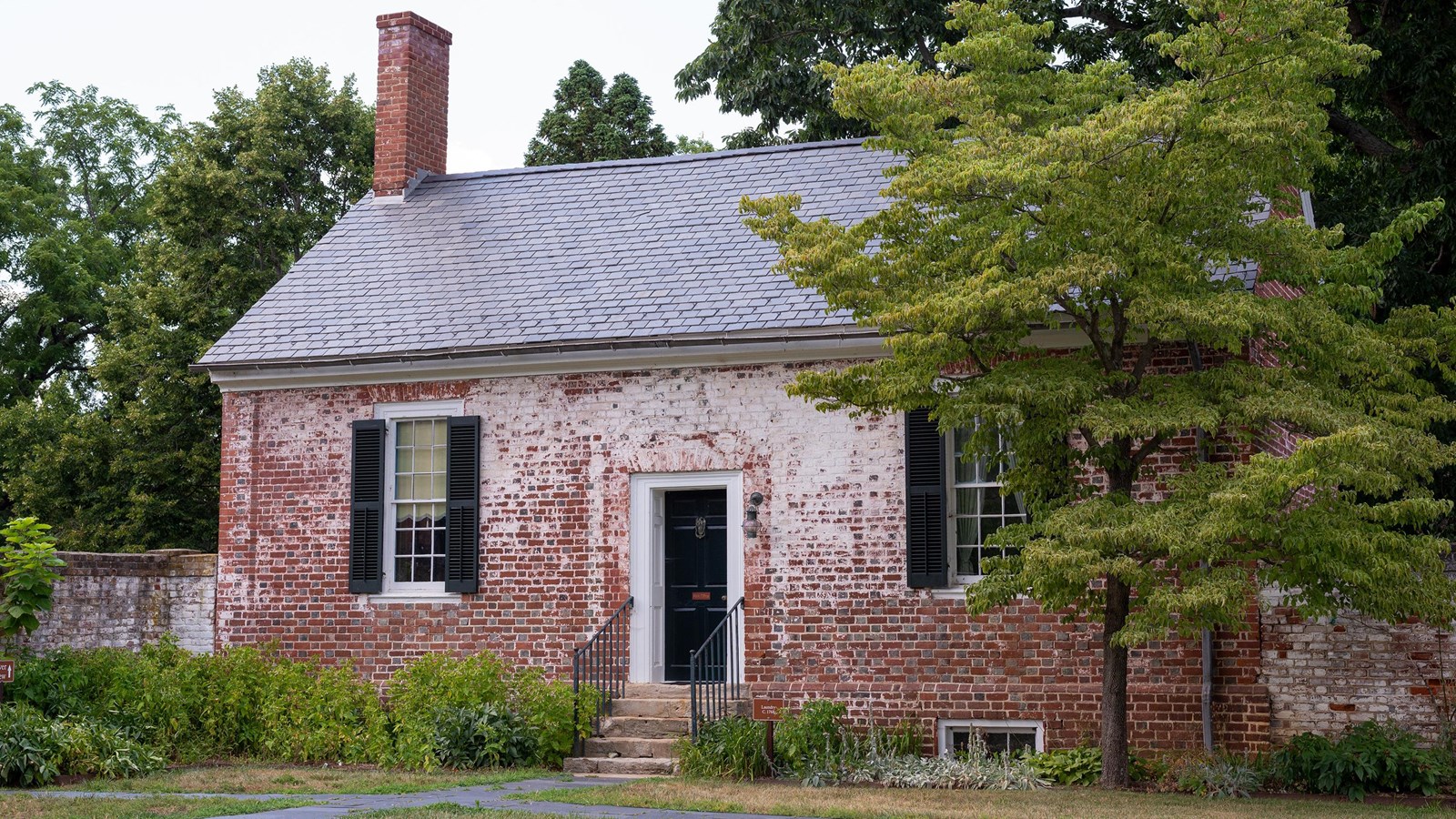Last updated: January 26, 2025
Place
Chatham Laundry

NPS Photo
Quick Facts
Amenities
1 listed
Historical/Interpretive Information/Exhibits
The laundry building, a one-and-half story brick building, was one of the original buildings in the Chatham plantation complex. An insurance survey from 1797 described Chatham as a collection of five buildings: a smokehouse, a laundry, a kitchen, the main house, and two wings. Enslaved people likely constructed the Laundry at the direction of William Fitzhugh, the first owner of Chatham, between 1768 and 1771. The laundry and kitchen were separated from the main house by about 44 feet, likely to reduce the risk of fire from open flames used in both outbuildings.
For decades, enslaved women washed laundry in this building. In the colonial and pre-Civil War era, laundry was backbreaking work that required great amounts of strength. The process included boiling water, scrubbing clothes against washboards, squeezing water out of clothes, and air-drying garments. Each piece of clothing also had to be starched, ironed, and folded. Because it was customary for enslaved people to live near the place where they labored, it is likely that the women who labored in this laundry also slept within these walls.
After the Civil War, a segregated staff of servants continued to labor in the laundry. By 1916, the laundry had been updated with “stationary tubs and electric irons.” In the 1920s, the Devores converted the laundry into a guesthouse. The Pratts later used the laundry as office space. When the National Park Service took over Chatham, the laundry was again transformed, this time into offices and a conference space for National Park Service staff.
Today, the laundry can help us understand the history of enslavement at Chatham and how these spaces evolve, carrying their complex histories into the present.
Lacy sold Mitchell to George Aler, a slave trader in Fredericksburg. For unknown reasons, Lacy and Aler made a deal: Ellen Mitchell could travel north into free territory, and if she could raise $1,000 in three months, she could buy her freedom, along with the freedom of her five children and mother. On this mission, Mitchell journeyed through the North. She returned to Fredericksburg with $1,800.
After purchasing her family’s freedom, Ellen Mitchell moved with her family to Ohio. In Ohio, she bought a home and made a living as a laundress. Ellen Mitchell’s story demonstrates how she was able to take advantage of a unique situation and advocate for herself and her family. Her determination and courage secured her freedom.
For decades, enslaved women washed laundry in this building. In the colonial and pre-Civil War era, laundry was backbreaking work that required great amounts of strength. The process included boiling water, scrubbing clothes against washboards, squeezing water out of clothes, and air-drying garments. Each piece of clothing also had to be starched, ironed, and folded. Because it was customary for enslaved people to live near the place where they labored, it is likely that the women who labored in this laundry also slept within these walls.
After the Civil War, a segregated staff of servants continued to labor in the laundry. By 1916, the laundry had been updated with “stationary tubs and electric irons.” In the 1920s, the Devores converted the laundry into a guesthouse. The Pratts later used the laundry as office space. When the National Park Service took over Chatham, the laundry was again transformed, this time into offices and a conference space for National Park Service staff.
Today, the laundry can help us understand the history of enslavement at Chatham and how these spaces evolve, carrying their complex histories into the present.
Ellen Mitchell
After buying Chatham Plantation in the 1850s, James Horace Lacy decided to send some of the enslaved people who lived at Chatham to his other plantations in Virginia and Louisiana. This decision would tear families apart forever. Ellen Mitchell, an enslaved woman who likely lived and worked here in the laundry, reportedly refused to comply.Lacy sold Mitchell to George Aler, a slave trader in Fredericksburg. For unknown reasons, Lacy and Aler made a deal: Ellen Mitchell could travel north into free territory, and if she could raise $1,000 in three months, she could buy her freedom, along with the freedom of her five children and mother. On this mission, Mitchell journeyed through the North. She returned to Fredericksburg with $1,800.
After purchasing her family’s freedom, Ellen Mitchell moved with her family to Ohio. In Ohio, she bought a home and made a living as a laundress. Ellen Mitchell’s story demonstrates how she was able to take advantage of a unique situation and advocate for herself and her family. Her determination and courage secured her freedom.
